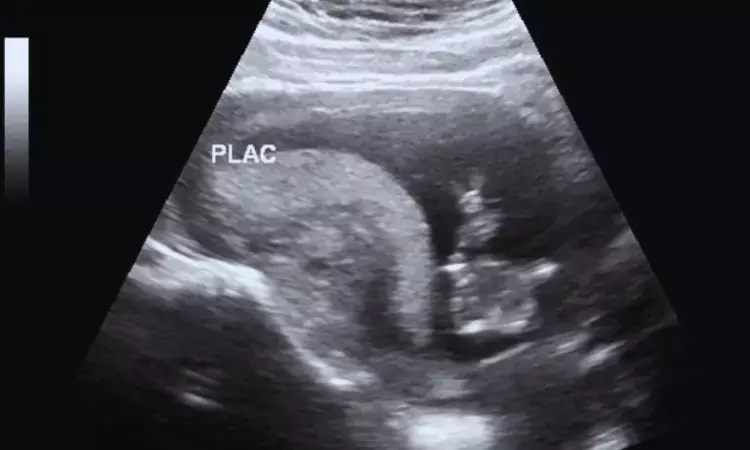- Home
- Medical news & Guidelines
- Anesthesiology
- Cardiology and CTVS
- Critical Care
- Dentistry
- Dermatology
- Diabetes and Endocrinology
- ENT
- Gastroenterology
- Medicine
- Nephrology
- Neurology
- Obstretics-Gynaecology
- Oncology
- Ophthalmology
- Orthopaedics
- Pediatrics-Neonatology
- Psychiatry
- Pulmonology
- Radiology
- Surgery
- Urology
- Laboratory Medicine
- Diet
- Nursing
- Paramedical
- Physiotherapy
- Health news
- Fact Check
- Bone Health Fact Check
- Brain Health Fact Check
- Cancer Related Fact Check
- Child Care Fact Check
- Dental and oral health fact check
- Diabetes and metabolic health fact check
- Diet and Nutrition Fact Check
- Eye and ENT Care Fact Check
- Fitness fact check
- Gut health fact check
- Heart health fact check
- Kidney health fact check
- Medical education fact check
- Men's health fact check
- Respiratory fact check
- Skin and hair care fact check
- Vaccine and Immunization fact check
- Women's health fact check
- AYUSH
- State News
- Andaman and Nicobar Islands
- Andhra Pradesh
- Arunachal Pradesh
- Assam
- Bihar
- Chandigarh
- Chattisgarh
- Dadra and Nagar Haveli
- Daman and Diu
- Delhi
- Goa
- Gujarat
- Haryana
- Himachal Pradesh
- Jammu & Kashmir
- Jharkhand
- Karnataka
- Kerala
- Ladakh
- Lakshadweep
- Madhya Pradesh
- Maharashtra
- Manipur
- Meghalaya
- Mizoram
- Nagaland
- Odisha
- Puducherry
- Punjab
- Rajasthan
- Sikkim
- Tamil Nadu
- Telangana
- Tripura
- Uttar Pradesh
- Uttrakhand
- West Bengal
- Medical Education
- Industry
Isthmic contractions common in pregnant women and can affect cervical measurements

Spain: In second-trimester pregnancies, isthmic contractions are common and can affect proper cervical length assessment, a recent study published in the American Journal of Obstetrics and Gynecology has shown.
The Spanish study revealed that ultrasound findings showed isthmic contractions occur in about half of pregnant women after bladder voiding and it takes about 20 minutes for complete relaxation of the isthmus following a contraction. Therefore, Alba Farras, Vall d’Hebron Barcelona Hospital Campus, Barcelona, Spain, and colleagues recommend performing cervical assessment at least 20 minutes after bladder voiding to lower the bias risk in cervical measurements and to avoid false images of placenta previa.
"The new method for isthmic length measurement provides an objective way to evaluate the intensity and presence of isthmic contractions," the researchers wrote.
Isthmic contractions are reported to be a frequent physiological phenomenon in pregnancy that can be triggered sometimes by bladder voiding and can interfere with proper cervical length assessment and may result in false images of placenta previa. However, not much research has been performed on the characteristics and prevalence of these contractions.
Therefore, the research team from Spain conducted the study to determine the characteristics and prevalence of isthmic contractions after bladder voiding in the second trimester of pregnancy. They also evaluated their impact on cervical length assessment and proposed a new method for the objective assessment of the presence and intensity of isthmic contractions in a prospective observational study.
During the second trimester after bladder voiding, long videos of the uterine cervix were recorded in 30 singleton pregnancies. Over time, changes in isthmic length and cervical-isthmic length were assessed. Measurement of the isthmic length was done using a new approach involving calculating the distance from the base of the cervix to the internal os, including the isthmus.
The study led to the following findings:
· Isthmic contractions were observed in 43% of pregnant women after bladder voiding.
· The median time for complete isthmus relaxation was 17.8 minutes.
· No significant differences in maternal characteristics were found between individuals with and without contractions.
· The proposed method for measuring isthmic length provided an objective assessment of the presence and intensity of isthmic contractions.
· A cutoff of 18mm in isthmic length allowed for the distinction of pregnant women presenting a contraction.
· A characteristic undulatory pattern was also identified in the relaxation of the isthmus in half of the cases with contractions.
"Based on the findings, we recommend performing cervical assessment at least 20 minutes after bladder voiding to lower the risk of bias in cervical length measurement and to avoid false images of placenta previa, the researchers wrote. "The new method for isthmic length measurement provides an objective way to evaluate the intensity and presence of isthmic contractions."
"There is a need for further research to understand the role of isthmic contractions in the physiology of pregnancy and birth," they concluded.
Reference:
Farras A, Catalan S, Casellas A, Higueras T, Calero I, Goya M, Maiz N, Brik M, Carreras E, Real-time ultrasound demonstration of uterine isthmus contractions during pregnancy, American Journal of Obstetrics and Gynecology (2023), doi: https://doi.org/10.1016/j.ajog.2023.07.025.
Dr Kamal Kant Kohli-MBBS, DTCD- a chest specialist with more than 30 years of practice and a flair for writing clinical articles, Dr Kamal Kant Kohli joined Medical Dialogues as a Chief Editor of Medical News. Besides writing articles, as an editor, he proofreads and verifies all the medical content published on Medical Dialogues including those coming from journals, studies,medical conferences,guidelines etc. Email: drkohli@medicaldialogues.in. Contact no. 011-43720751


